How To Tell If Your Horse Has Shut Down
Did you know that some horses ‘shut down’ their emotions while still doing what is asked?
Did you know that some horses ‘shut down’ their emotions while still doing what is asked?
The stillness that is the result of a tight and tense horse is often mistaken for calmness - until the horse overreacts
When your horse shuts down, it is a coping mechanism for not knowing what is expected of them and being scared of the consequences of doing the wrong thing. What is thought of as your horse being calm and relaxed because they are standing still is actually them choosing to do nothing to avoid the consequences of the wrong behaviour.
When this occurs in training, the horse stops learning and engaging with us and starts trying to protect itself. Rather than them learning how to process the training cues with calm relaxation, they are tight and tense on the brink of being tripped over into a fear state. This stillness that is the result of being tight and tense not knowing what to do is often mistaken for a calm, quiet horse. The horse hits its threshold for what it can cope with and all of a sudden overreacts leaving the owner/trainer saying “where the hell did that come from?”
Being shut down is also like learned helplessness. Learned helplessness is a shut down state but not all horses that are shut down are in a learned helplessness state.
Signs your horse has shut down:
Horse stops responding to whips, spurs and being led by the halter or bridle
The horse is unresponsive to a lot of stimuli (typically called a bomb proof horse) when trainers train desensitisation without training how to process, relax and breath through fear, the horse learns to just not to react to things it is scared of.
Horse is standing perfectly still but standing tense and not breathing deeply. Their posture is guarded, they know where their exits are and ready to run, if there are no exits they will be getting ready to fight.
Horse unexpectedly over reacts like launching into the air, broncing, bolting or lunging out at you with their teeth or legs.
Avoid contact. They don’t try to initiate conversation with you and actively avoid you by not looking you in the eye, not touching you with their nose, standing perfectly still when you pat them and sometimes flinching at your touch.
The horse doesn’t exhibit the normal stress signs because it is like a dissociative state. They have “left the building”, disconnected from their body.
Your horse is often trying to communicate it is uncomfortable when it is shut down before it stops coping. This is why with the way we train we try to encourage our horses to tell us they have a problem before they have a big problem. The signs are often very subtle however and often missed.
It can be the swish of a tail, the stomp of a hoof, the toss of the head, the swivel of the ears. This is where knowing your horse becomes so important and also why we use pressure release the way we do. Your horse can do these things as a little grumble and protest but then chooses to work with you. Other horses will do this as a sign to say back off I’m not coping. Its important to learn how much pressure your horse can cope with before they aren’t coping anymore, what behaviour they show when not coping, how they communicate to back off and what you need to do to help soothe them back into a state of processing cues again.
Over time as your relationship and trust builds your horse should become less sensitive and more willing to your asks but only because they know you are listening to them and respecting their boundaries they allow you to ask more of them.
Using tactics to scare, intimidate and bully horses into submission is a common training tool used today. And, because it works, it continues to be used. It’s how I was initially taught to train. “Be scarier than the thing your horse is scared of”. However, I also learnt to train by teaching beginners who aren’t strong enough, coordinated or savvy enough to get a horse to cooperate through these tactics and so had to find another way they could get their horses to not only do as they asked but also to look after them.
Begin training your horse the CORRECT way
Training Trainability takes you through the methods to avoid your horse shutting down - click here to learn more3 Reasons Your Horse Is Pushing You Around
Do you ever have those moments when your horse comes in close - then nearly stands on your or knocks you over? Or perhaps a horse that pushes ahead of you to get to the gate, even though it is on the lead?
Do you ever have those moments when your horse comes in close - then nearly stands on your or knocks you over? Or perhaps a horse that pushes ahead of you to get to the gate, even though it is on the lead?
Then you know what it is like to have a pushy horse.
A pushy horse isn’t necessarily nasty, but if the behaviour is left unchecked, it could result in a dangerous situation.
Of course, the last thing we want to have to do is continuously discipline our horse. It feels horrible to constantly tell them off, and it can damage our relationship.
If you know why your horse is pushy, it could save you a lot of time and effort in correcting the issue.
TIP: OUR FREEBIE IN THIS ARTICLE NOT ONLY SHOWS YOU HOW TO START CORRECTING THE BEHAVIOUR, IT DOES SO WITHOUT DAMAGING YOUR RELATIONSHIP OR AFFECTION FOR EACH OTHER!
You horse is insecure
An insecure horse is going to push into you for security, or may try to pull away from you to get to a more secure location - such as with the rest of the herd. This can happen when you horse is dealing with separation anxiety, or when they are in a new environment.
Tip: if you work on your horses trust, they will follow your lead more consistently. Work on adventures in our guide to start establishing trust and identify the areas your need to strengthen in your training and relationship.
2. Your horse doesn’t see you as a leader
It may be that your relationship is new, it may be that the herd structure has changed, or it may simply be that your horse has an alpha personality - whichever it is , your horse will, at some point, make you prove you are their leader.
Leadership is based on a level of consistency and knowledge, as well as comfort that you can. If you give the impression you cannot, your horse will look for someone who can - and will take it upon itself to see if it should be the leader instead. It’s instinctive - it is what would happen in a herd.
You can be a strong leader without beating your horse into submission (or scaring it with objects), and you don’t have to turn into a horse to do it either! The Holistic Horse Handling Program provides you with the tools you need to become a human alpha and understand the challenges that face it.
3. You keep giving your horse mixed signals
The biggest mistake I see is a lack of consistency - which is absolutely critical to preventing pushiness.
Your horse doesn’t care about the day that you had a cold and still had to turn up for feed time - but what it does care about is that it was able to push into you to get food quicker, and it worked.
Being consistent means you know what you expect and your expect this EVERY — SINGLE — TIME (perhaps singularly excluding life-threatening situations). Know what your boundaries are, and make sure your horse respects them too.
We hope that you have recieved some insight into why your horse may be pushy - pushing your boundaries, pushing your buttons, and potentially pushing your over. Contact us here if you need any further advice!
Are you looking to improve your horses security with you, become a leader your horse can trust, and understand how to clearly and consistently communicate with your horse?
Click the image below to register for the free Masterclass,
or join the opening communications course to get started!
Making time to ride: 7 ways to fit it in
Making time to ride doesn’t have to be so difficult – does it? As we each live busier and busier lives, sometimes it seems next to impossible to make our riding commitments stick. Here’s a few things you can try to help you get out in the saddle more often.
Making time to ride doesn’t have to be so difficult – does it? As we each live busier and busier lives, sometimes it seems next to impossible to make our riding commitments stick. Here’s a few things you can try to help you get out in the saddle more often.
List it
Ever heard of the Eisenhower Matrix? It’s a great way of prioritising your activities ranked by level of importance and urgency for your day, week or even month.
Grab a piece of paper, and divide it into 4. Top left, decide what is Important and Urgent. Generally, this is crisis, emergencies or important deadlines, but would also include feeding animals (and family). These should be ticked off your list quickly.
Top right is Important and Not Urgent. This section often includes relationships and family, and is likely where your horse riding will fall. Allocate a large amount of planned time for these activities.
Bottom left in Not Important and Urgent. These items need doing soon but are not important to you – so can you delegate them? If not, get them done quickly and don’t spend too much time on them.
The final quadrant is Not Important and Not Urgent. Usually television, games and social media fall into this category. In September 2016, Mediakix estimated the average time a person spent on social media PER DAY was almost 2 hours!! But let me ask you – if it’s neither urgent nor important, could it be nothing more than a time waster, which you could be using more productively, for example, riding?
Negotiate like Samuel L Jackson in, well, the Negotiator
Nearly all of us are required to work to be able to afford our general expenses (most of which goes to our ponies, dare I say!). While not possible in all cases, there is a chance that you can negotiate with your boss for some flexibility in your work day. Here are a few suggestions that may work for you, depending on your work situation:
Can you start/finish earlier, or perhaps even later, to take advantage of some time with your family and horse?
Can you negotiate some of your break times to be at the end of the day, to leave earlier?
Can you negotiate time in lieu in place of overtime, and spread those hours throughout your week/month?
Look after your health
It might sound cliché, but the better your health, the more energy your have and the more productive -you will be. Ensure to get a solid sleep, eat well and make time for exercise – remember, horse riding is exercise!
Save your daylight
Horse riding is an activity that favours sunlight, unless you are lucky enough to an undercover arena with lights. Have a look over your Eisenhower matrix, and highlight the activities that can be done in the dark, such as housework, meal prepping or (in my case) writing.
Organisation is key
When your time is limited, organisation is key to getting maximum value. Having your tack shed organised in a way that allows quick access to everything you need for a short ride will be guaranteed time saver.
At the same time, organising your desk can save you precious time that should be used wisely - riding, of course.
It’s time for a new mantra
When we become busy our focus can shift off our important priorities and onto random, unimportant tasks. This not only wastes our time but starts to change our views of the important tasks in our lives, in essence negating their higher priority.
This doesn’t mean that you should beat yourself up when other, urgent and/or important activity take away your ability to ride, but is definitely something to think about if your time is being absorbed by non-urgent and unimportant tasks.
Put some effort into making your horse more receptive to your training
Spending time now training your horse will save you loads of time when you really are short on time. Think about it - how much time do you waste:
Trying to avoid being shoved around by your horse at feed time?
Trying to put a bridle on the sudden giraffe?
Chasing your horse around the paddock because he doesn’t want to be caught?
Spending the time to make sure your boundaries are respected & your horse enjoys spending time with you will save more time than your realise.
Actively involve your horse in your training!
When our horses feel a part of their training, they are happier to work with you! Click her to learn more
What tips do you have for making more time for riding?
Are You Stressing Your Horse? You Should Be!
Stress can increase your horses performance- when done correctly.
Every time you ride your horse you are stressing them. Even when you are not riding them certain paddock conditions will stress them. Sorry, but not sorry for being so blunt. The truth is I've spent a lifetime trying to justify what I do with my horse. For me it was a constant battle of seeing such a beautiful, majestic, free spirit and subjecting it to conforming to structure, "behaving like a good horse should", and putting myself into that leadership role where I say, you do. We have all heard people talk about horses like there sole purpose for this world is for them to be ridden by humans.
"What's the point of having a horse if you're not riding it. Its being wasted."
"Competition is just a refinement of what its already doing in the paddock."
"Its just being naughty. It should know better."
"Its my horses fault I'm not where I want to be with my riding."
"That horse is crazy/dangerous/only good for dog meat."
But the thing is that being ridden is something we have imposed on the horse. It was not born into this world to understand the pressure we put on them to respond correctly to us poking them in the ribs, pulling on their nose and mouths and wiggling our butts around on their back. There is a very complex training scale that they have to go through to get them from green and unbroken, to the quiet, sound and intelligent performance horses we dream about. There is a fine line of showing good leadership skills so that we can inspire trust and confidence in horses and bullying and dominating them into submission.
There was a good period where I nearly quit riding altogether because I couldn't reconcile my feelings about imposing my will onto another, with what is needed to be a "good rider". But then I realised me quitting riding wouldn't improve the way horses are trained and ridden, only learning how to improve on our current training practises and then teach others, could I possibly affect change in the industry.
So if I am going to make such a big, controversial call like every time you are riding your horse you are stressing it, I better get stuck into explaining myself before the hate mail starts!
“Stress is being subjected to pressure, strain or tension”
Each time we ride our horse is being exposed to the physical stress of exercise, the mental stress of learning, performing and offering the correct response and the emotional stress of "being a good horse" or showing the correct behaviours that get it what it wants, pleases its rider and doesn't result in pain or distress.
Begin training your horse the CORRECT way
Click here to view the courseSo the real question is not whether or not we are stressing our horse but whether or not the stressors we are creating are building our horse up in health mentally, physically and emotionally or whether the stressors we create are contributing to the deterioration of our horses mental, physical and emotional health. This is where it can get a bit tricky. Each horse is an individual and will respond differently to stress than the next. The more stressors they have in their lives the more it will break down the resilience to stress. And how they have been conditioned before they came to you will affect how they respond to stress.
Even when your horse is not reacting physically to stress, as commonly seen in the stressed horse such as flighty, easily taking the bolt, or rearing and bucking, there is still a complex underlying chemical process affecting fluctuations of hormones, muscle tightness, heart rate and the like. So even when you can't see the stress it is still there, happening, building under the surface, waiting for the perfect tripwire to set off the cascade of flight hormones that is the horses instinctive response for self preservation.
Our goal as horse riders is to know where this tipping point is and to try and keep our horse just shy of it because this is where the magic is. Just enough stress to push them to give their 100% performance but not so much that we push them over. And you know what? Sometimes we do push them over. Or in the case of my horse he needs to crack a tanty to apply himself to the work at hand. So it is also our responsibility to be able to cope with our horses behaviour when they do trip over that point.
There is also a difference between acute stress and chronic stress. Chronic stress is that daily ongoing stress that over time wears the body down, reduces immune health and triggers genetic responses towards poor health and nutritional deficiency. Acute stress is short periods of slightly increased stress that trigger the adaptation process, that builds up strength, health and resilience.
So what we want to do as riders and trainers is expose our horse to the level of mental, emotional and physical stress of WHERE THEY ARE AT RIGHT NOW for the period of time that BEST SUITS YOUR HORSE AS AN INDIVIDUAL and then intermittently expose them to an increased amount of stress that triggers an adaptation process to create a higher level of performance. If the level of performance IMPROVES your horse was at the best place it could be to be ready to "Level Up" and work at a higher quality. If their level of performance DETERIORATES you want to take that extra stress off and work at what they can do easily for a while longer before challenging their ability again.
I can also give you a 100% guarantee that you will have to push through some behavioural problems when you are pushing for a higher level of performance. This is the mental resistance to being able to do something they've never been able to do before, crashing through comfort boundaries and learning new skills.
Begin training your horse the CORRECT way
Click here to view the courseThis is where so many riders feel stuck and frustrated!!! They will go through periods of intense growth and soar quickly to new heights and achieve things they've never done before, only to plateau and stay on the same exercises day in and day out for months. But these periods of plateau are INTEGRAL to progress because you are conditioning and building your horses resilience to this new level of stress BEFORE pushing for more. (And also why I strongly push cross training with pole and grid work and hacking out).
Remember from introducing a new exercise it takes:
· 6 - 8 weeks for neural innervation (coordination)
· 3 - 4 months for muscle tone (where the horse can actually perform the task and their muscles start to bulk)
· 6 - 12 months for bone and ligament density (where the movements you have been training become part of the conformation and are now easy to execute, generally where you experience the "Level Up"
All this is as long as your horse is in perfect health. Any other stress factors can impede the healthy adaptation to exercises that will result in improved performance.
KEEN TO LEARN MORE?
I will be releasing several guides on THE exercises to be doing with your horse whether you are trying to transition a green horse to an educated one, trying to repair and rehab musculoskeletal damage, bring your horse back into work or just want a thorough warm up that will ensure your horse is less susceptible to musculoskeletal damage during your ride. Click here to learn more
Stop The Frustration of Your Riding Journey
“Why does my horse..?” “Why wont my horse..?” - STOP THE FRUSTRATING AND START LOVING YOUR RIDING AGAIN!
When we set out on our adventure with our horse, we have a goal in mind.
That goal is the bright and shiny object that will believe when we achieve it we will be happy.
We don’t realise when we first start out how many things we need to learn to achieve the bright and shiny object. We think it’s gonna be a piece of cake. And when our first road block pops up we google “why is my horse…”; we get through that, then the next road block pops up we get frustrated and ask some friends, “why does my horse…”?
You go to a clinic that works on that problem and you get through that. Then the next road block pops up… cue the cry of frustration.
The next thing you know its 1 year, 2 years, 5 years later and you still feel like you’re no closer to your original goal. You feel like giving up on yourself and your horse, you’re never going to get there. Maybe you should just quit?
This is where we have to remember WHY we do this in the first place!
Your horse is your happy place and as much as they can drive you crazy they are also your sanity. You are at your happiest on the back of a horse. It makes your heart sing. If days go by and you haven’t spent time with your horse you know it… and so do the people around you!! So how do you find your happy place with them again?
You need to enjoy the journey and not make it all about the destination. Your riding isn’t about being the best but being better than the person you were yesterday.
That doesn’t mean that you need to give up on your goal. It just means that you need to let go of the result and enjoy the process. Allow you and your horse to achieve that goal when you and your horse are ready. Because let me tell you, the same day you achieve it you will say right that’s done, now whats next without even taking a second out of your day to reflect and be grateful for all that you and your horse have achieved together.
So today’s message is let go, enjoy the process, be with your horse because your horse is what makes you happy, let the journey unfold and shape the person you will become and your horse into the horse you’ve always dreamed of.
Wish there were a way to fast track the goal? Download our free guide on the exercises that you can do the lead to a stronger bond with your horse here.
Using Your Seat In Canter And Sit Trot
The missing tips for learning your seat
Want to work on improving your canter and sit trot?
Join us at our independent seat workshop April 6 2019!Is Toes In Really Improving Your Riding Position?
Or is it destroying your seat?
For many of us, when we are riding under instruction, we often hear the command “Toes In!” - especially if you are focusing on the dressage discipline.
But is it doing your riding any good?
Why I don’t teach toes in:
My instructor that taught me to teach gave me the best piece of advice I have ever received as an instructor: “if you can’t explain it, don’t teach it”. This has lead to a life long, never ending pursuit down the rabbit hole of “why?”. Seriously you’d think I was a 2 year old!
Rather than observing our dressage etiquette’s as gospel I have asked why of everything ever taught to me before and since and everything that I have ever taught.
So why toes in? What purpose does it have? Mostly because toes out looks bad!
But that’s not a good enough answer for me.
I believe the purpose of any postural correction in the saddle should first and foremost improve our horses ability to move freely, secondly improve our balance in the saddle and lastly “look good”
In fact turning your toes in uses the exact opposite muscles you need to ride with an independent seat! It makes you tighten your thigh and knee taking your calf off and rotate your pelvis down hollowing your lower back.
So while I don’t teach toes in, I do teach how to control your lower leg to enhance your horses movement and be more effective with your aids and supple through your seat. And then AFTER you can do this we can tidy up your toes and make the look overall aesthetically pleasing.
We have our last workshop in April before I’m on maternity leave 😱 we cover how to use your lower leg, seat and body most effectively to enhance your horses movement and your balance, not limit it.
Product of the Month
Katie and Sarah feature and review different products & tools each month for your horse.
April 2019
Horze Fly Mask
I have to say that over the years that Horze has been available I have come to really like and trust the brand. Although they are repeatable the cheapest on the market they don’t skimp on the details, often going the little extra mile on design and fit, which I have found again when I got Fitty’s new fly mask.
Fitty is prone to itch, so I was drawn to the fact that it comes with the ears built in and doesn’t just sit behind the ear but has extra material which would allow it to meet where his rug ends. It is a lovely fit and sits nicely around his check bones. It has 2 straps of double Velcro which holds it securely in place and has meant that he hasn’t yet turfed it in the paddock - as he likes to do!
Fitty is yet to ditch the mask, so big thumbs up!
It comes with a few extra bonuses:
UV protection
Weather resistance
Opening at the pole for horses that have a lush forelock (not a problem I have with fitty unfortunately)
The downside:
Fitty has come up with a bit of a rub mark on his nose where the bottom of it sits. I am playing with how tight I do it up to see if that is the cause.
Once again I am stoked with my Horze product for the price (not going to complain when he destroys it and it has to be replaced), fit and quality and Fitty is keeping the flies out of his eyes because he can’t get this one off!!
Find out more here!
—Katie
We’d love to here about your favourite product for review! Pop a comment below or send us an email!
March 2019
Dark Selections Customise Your Own Mattes Saddle Pad
After spending hours creating numerous coordinating saddle pads, I just had to share the link for this product.
The Mattes Saddle Pad is 100% customisable to colour, trim, additions like fur trim or saddle fixing, and you may, like me, find yourself spending hours creating your own perfect colour branding for your horse.
What’s to like?
Complete customisation, even to the logo
44 colours to mix and match
Correction system option allows you to correct irregularities in your horses build or adjust the fit for a green horses rapidly changing form
A saddle fix option that not only helps prevent slippage but also lifts the pad off the spine, allowing for complete freedom in movement
What’s not to like?
Beside the hours you will spend creating the perfect colour combination, the price quickly adds up with each advancement. But hey - some people spend over $150 on shoes with a beer brand on them - at least the saddle pad won’t get you laughed out of the arena.
Create your own custom saddle pad by clicking here.
We’d love to here about your favourite product for review! Pop a comment below or send us an email!
The Mounting Issue - Scary Tales from a Professional Rider
Horse’s that play up when being mounted leave us in the most vulnerable of positions.
For a good period of my career as a horse trainer and instructor my biggest worry was horses with issues with mounting. When mounting we are in such a vulnerable position - we are committed to getting onto the horse whilst not being balanced and in the saddle yet.
This fear started with a warmblood thoroughbred cross who would take off broncing when I would have one foot in the stirrup and the other one swinging over his back. He was a big lad and it would really hurt when I fell. I didn’t at the time understand why he was doing it and I didn’t know how to stop it. So I got scared. I had created the problem.
As a teenager I had a pony club instructor that drilled into me the pony club etiquette of mounting. This was where you stood at their shoulder facing their hindquarters with one foot in the stirrup and gracefully swung onto the back of the horse. I never successfully achieved it. My mounting technique became “stand facing the horses hindquarters with foot in the stirrup and hop, hop, hop until I was facing their head and then stand into the stirrup and pull myself up onto the horse from the front of the saddle.” This was fine with the horses that I had ridden up until that warmblood.
He had a large barrel that came down past the length of my leg. Without my awareness as I hop, hop, hoped around to face the front my toe would scrape along his ribs causing his body to tighten and tense up with the pain and discomfort. Then I would pull/haul myself up, twisting the saddle into his now tight and tense back. Standing into the saddle with one foot halfway over his back he would take off broncing leaving me no chance of pulling him up and staying in the saddle. I was just at the beginning of my career as a horse trainer and breaker and now was petrified of mounting unknown horses.
So for me the best way to overcome fear is a sprinkle of faith, a dust of trust and a full stocked armoury of knowledge. What does it look like if a horse is going to react to the mount? What does it feel like? Where do you see the warning signals? What’s the cause? What’s the trigger? But also how do we fix it?
Since that horse, I was able to refine my mounting technique to avoid being the trigger! I also had my fair share of other horses that had different reasons for having problems with being mounted and was able to learn how best to work with them to resolve their issues. I believe the mounting process is the most important process to have safely established because as riders, this is where we are most vulnerable. Also, a horse that figures out it can get out of work this way is the most difficult to fix. Ideally this should be addressed when they are broken in. In my training a prefer a horse that doesn’t know that this kind of behaviour is an option and trying to avoid the broncing out process in favour of the horse accepting the saddle and the restriction of the girth. Accepting my weight and my seat in the saddle. Accepting me as they figure out how to balance me when they move. And lastly established and sound enough through their topline to not need to buck in their transition to canter or other times in the trot etc.
Reasons a horse can bronc or take off in the process of being mounted:
Saddle is not fitted and causing pressure or pain
Problems with their spine or sacroiliac joint
Problems with the way the rider is mounting for example me scraping my toe along the ribs or plonking heavily into the saddle on the mount
The saddle being twisted as you mount
If a horse has had a bad experience being backed, or mounted (for example if at some stage they haven’t been taught to accept the saddle and girth or were sore through their back with someone mounting and it wasn’t addressed) and that memory being triggered
Figuring out it gets them out of work
Actively involve your horse in your training!
When our horses feel a part of their training, they are happier to work with you! Click her to learn moreSigns your horse is not going to let you safely mount
They are standing still or tense as you get ready to mount
They are fidgeting as you get ready to mount
Their back roaches up, you will also feel this if your horse is bracing itself when you sit into the saddle and they might start broncing when you ask them to walk off.
Roaching up through the back as you tighten the girth.
If you lunge them before you ride, they start broncoing when you send them out on the lunge in the walk.
This is definitely not an issue I recommend you taking on lightheartedly NOR without the supervision of a professional with plenty of experience with this. There’s a good chance your instructor won’t have the tools necessary to work through this behaviour and you will want to find a kind breaker to help you and your horse. Once you are successfully mounting your horse again it doesn’t mean that the problem is “fixed”. It will come up again in the future unless you implement some strategies to keep an eye on how your horse is coping with the process. You will most likely need to keep going back and working with the breaker a few times until you can stop it from being a problem at home yourself. This is why I prefer to not have the horse know that its an option in the first place.
For me the most important learning curve of this process and being able to work through it myself with horses was to break down the process so the horse could give me the cue that it was going to be a problem before I was in a vulnerable position halfway on their back. In the process I also teach them acceptance, willingness and give them the opportunity to say no until I can make it a yes. While this is a slower process than our gunhoe cowboys will do, it sets up a relationship with your horse down the track that it is allowed to tell you no when it is uncomfortable and trusts that you will listen rather than push them through their problems. Having our horse actively involved so that the process happens for them not to them means they are happier to explain their gripes and then once we work through all the causes they will more happily and willingly allow us on their back, with our big goal to invite us on their back and enjoy being ridden!!
Actively involve your horse in your training!
When our horses feel a part of their training, they are happier to work with you! Click her to learn moreWhacky Adventures of the Clutzy Horse
Do you have a horse that is constantly getting injured?
Have you ever had that horse that seems to always get some form of injury FOR NO APPARENT REASON AT ALL?
Imagine my angst to start 2019 with exactly that - a horse, previously without concerns, suddenly getting into all sorts of mischief!
It all started with his very first hoof abscess (that we know of, anyway).
He ate his morning feed perfectly fine, and had a very minor tenderness to the way he walked out into the paddock - a walk that looked much more like a hesitation for extra treats than any actual pain. One and a half hours later, as I collect him from the paddock for our weekly riding lesson, you think his hoof would have fallen off by the limp! (Cue for all horse owners to go -yep, tell tale abscess there!).
Poor blighter had never been with us for any kind of injury and turns out his is the biggest sook! Turns out, I’m also a big softy. Custard received the biggest spoiling and extra treats & hay (good tip to improve your bond through a crisis is to take the chance to emotionally support their needs as well as medically support them!).
Abscess passed as they do, and it is now 2 weeks later and time for our next lesson. Would you believe me if I were to tell you that the exact same thing happened again? Ate breakfast, left fine, collect from the paddock with a massive limp, got lots of spoiling, treats and hay.
It’s at this point I’m wondering if I am just that unlucky or am being outsmarted by a cunning ploy cooked up in the paddock for extra treats. I’ll let you decide.
Abscess passed yet again. A certain Custard is looking very impressed with himself. That is, until he comes in one Saturday morning (yes, just before our lesson) with a piece of stick jammed almost 3cm into his knee!
Obviously, all that money saved from the lack of lessons went straight into an emergency veterinary bill. Flushing, stitching, antibiotics, pain relief, and a massive restocking of the first aid kit due to all the bandaging in the first week!
The ultimate first aid kit checklist for your horse
Click here to accessBright side is that the stick didn’t actually penetrate the joint capsule. Not sure what stroke of luck that was but I’ll take it!
Thankfully, one month later Custard is well on his way to recovery although still can’t be ridden. And I’m still trying to figure out if I’m just mildly unlucky or if Custard has outsmarted me.
You decide! Comment below if you think Sarah is being conned by her pony, or tell us about your own clutzy horse stories!
7 Questions to Ask Yourself About Your Riding Seat
How can you tell if you have developed or improved your riding seat?
How do you know when you have a well established, independent seat?
Our riding can feel like a never ending process of self improvement (or struggle to success). I find that for a lot of students we are our own worst critic - and what’s more our peers are often not very positive either. Part of having a good independent, upright seat is understanding what it is, when you have it, how you achieve it, acknowledging you will never be perfect but knowing the key areas that you are working on to improve and rewarding yourself for how far you have come. Hopefully you can also have some cheerleaders that are supportive and encouraging of your development as well and not just trying to pull you down with negative comments.
When riding we want to transfer our balance, core and centre of gravity skills to the saddle. The better we get at maintaining good posture on the ground the better our posture will be in the saddle and more independent our seat will be. Where you are holding your horse from is also very important. It is impossible to get into a good, independent upright seat when you are tensing your inner thigh and rotating your pelvis down. Essentially our independent seat is all about strengthening and stabilising our legs, rotating our pelvis up and increasing the freedom and range of movement of our upper body.
When you manage to get the holy grail that is the synchronicity of your movement integrating and moving as one with your horses movement you will feel things like:
You sit more upright and feel your horse adjust itself and come into self carriage
When you get your seat into the right place and all of a sudden that aid that wasn’t working works
When you put more weight into one stirrup than the other and your horse shifts its balance
Your can pull your shoulder back and let the other go forward to turn and your horse follows without needing to use the rein
You can turn through your hips and pelvis and the horse knows where it is joining
You can shorten or lengthen the stride or ride a different pace just by the flick or adjustment of your pelvis and hip bones.
Most of the time, it doesn’t last. So we are always working towards getting better and holding for longer. You want to ride a positional correction before you ask for each movement to keep reengaging those postural and core muscles.
Here are 7 questions you should ask yourself to understand how your seat is working:
If you were to take the horse out from under you, would you still be standing up balanced?
When riding we don’t learn a whole new centre of gravity and balance. We take our already established posture, core, centre of gravity and balance from the ground and learn how to apply that to the saddle. The longer and taller you can hold your posture and the more freely you can move your upper body and legs in the saddle the more centred you are in your core.
If you were to take the reins off you and put your arms out to the side, would you still be balanced?
Our balance and stability in the saddle starts with our legs. If your legs aren’t stable under your body you will be using the reins and the horses mouth to balance yourself. If you can hold your arms out to the side and maintain your balance you will be using your legs and core and not the horses mouth.
Can you hold your 2 point seat (without holding the reins or mane) and not collapse into the saddle?
In our rising trot every second step we are standing out of the saddle. If your unable to hold yourself up in your 2 point seat without holding on with your hands there is a good chance your legs aren’t strong enough and balance is not centred enough to be holding your independent upright seat in the rising trot.
Can your ride different horses strides without losing your balance?
Challenge how good your balance is by riding other horses, especially trotters and warmbloods. The bouncier the stride, the more they throw you out of the saddle, the better you need to engage your core to stay with the movement.
Improve your independent seat
Click here to join the workshop in SE QLD April 6
Do you get bounced around a lot?
Getting bounced out of the saddle and sucked into the saddle has a bit to do with your horses level of education. If your horse is behind your leg they won’t help you with your rising trot and will suck you into the saddle. It could also mean your legs are too far forward. If you get thrown up out of the saddle and over the front of the saddle your horse may be moving unpredictably. You also may be hanging on too much with your knee and inner thigh creating a pendulum action with your lower leg.
Do your shoulders sit in front of your hips?
You won’t be able to tell unless you have someone tell you or see photo or video of yourself. Also you may have people always telling you shoulders back. Any degree of shoulders in front of your hips puts your horse on the forehand and results in you locking and bracing your elbows and pressing down on the reins to use them. It also means your hips and pelvis are rotated down and will create resistance from your horse to the bit.
Do your shoulder sit behind your hips?
Shoulders too far back is the result of hollowing your back or using your body weight to try and follow the movement and get your shoulders back rather than following the horses movement actively through your pelvis. This is most common in canter and sit trot and seen more exaggerated in riding the medium/ extended trot in sit trot. This results in a lot of concussion on your horses back and will make them hollow their back away from your seat. We want to invite their back up into our seat.
Improve your independent seat
Click here to join the workshop in SE QLD April 6Is Negative Reinforcement Really So Negative?
If you have ever heard of negative reinforcement, chances are you may think it’s an unpleasant way to train your horse. What if I told you that isn’t necessarily true?
Have you ever wondered if the training you are doing with your horse is considered positive or negative?
Have you ever heard someone strongly debate the fact that negative reinforcement used in training is a form of punishment and therefore cruel?
Negative reinforcement does offer some confusion, given the name implies it is already unpleasant. So let’s delve a little deeper into what it is, how it differs from positive reinforcement and punishment, and when you may be using it with your training.
What Is Negative Reinforcement
Negative reinforcement is a training tool that SUBTRACTS an stimulu, usually a level of discomfort, in response to a desired learned behaviour.
AHA! There it is, that word! Discomfort!
But let’s delve a little deeper into the that as well.
The adverse stimuli, or discomfort, doesn’t necessarily mean HARMFUL. Let’s think of a few human experiences where negative reinforcement comes into play:
On a certain day of the week, you leave home earlier to avoid particularly bad traffic. Leaving home early is the learned behaviour, and bad traffic is the negative stimulus or discomfort.
You partner or housemate rinses their dishes in the sink before loading the dishwasher, to stop you from complaining. Washing the dishes is the desired learned behaviour, your complaining is the negative stimulus.
You grab a child’s arm (negative stimulus) to stop them from going near the kitchen near the stove, and release when they go the other way (desired behaviour). (Note, this may take many tries. Thank goodness I work with horses, as they are usually quicker at catching on!)
When we apply these examples to horse training, you get:
Pull on the reins (negative stimuli) to make the horse stop (desired behaviour). When the horse stops, we stop pulling on the reins - thus, making it negative reinforcement.
Applying pressure with the legs to make the horse go. When the horse moves, we stop applying that pressure.
See where I’m going with this?
The big issue is when people confuse negative reinforcement with punishment, and vice versa.
Begin training your horse the CORRECT way
Click here to view the courseWhat Is Punishment?
Punishment, on the other hand, is the infliction of discomfort in RETRIBUTION for an offence, which, in the case of training, is not complying with the desired behaviour. The level of discomfort is also usually excessive than required if negative reinforcement was used.
To take one of the human examples, punishment would be to continue to shout and nag at your partner/housemate regarding the dishes, even after they get up and do them. Or to continue to shout and nag at them because it’s not “good enough” even though they are trying their best. And then continue to hound and nag at them for more tasks to be done with no appreciation of the effort they’ve already given.
In the case of the use of punishment in horse training, I can see you now conjuring the trainers or riders using excessive force with whips and spurs, buying stronger bits and nose bands and generally bullying into submission. Perhaps even using whips around the head for a horse not behaving, or locking the horse up and not feeding them. Not only are these methods unethical, but you cannot teach a behaviour using them - in fact, you weaken the behaviour, or weaken the personality that will exhibit the behaviour.
And this isn’t what horse training should be about.
What About Positive Reinforcement?
This one tends to make us feel warm and fuzzy, simply because of the word positive. And to be honest, it is a critical tool in the trainers box that shouldn’t be overlooked.
Positive reinforcement is to use a REWARD for the application of a desired behaviour.
In people world, when someone thanks you (hopefully) for holding the elevator doors open, that is positive reinforcement. You are more likely to repeat the behaviour as you received a positive stimuli in response.
We use positive reinforcement with our horses when we:
Give them a treat for standing still when catching them in the paddock
Give them a pat and a kind word for trying or executing the requested exercise.
To use solely positive reinforcement with an animal that outweighs you 5 to 1 is unlikely to succeed quickly (or safely), but a combination of positive and negative reinforcement, with the exclusion of punishment, will provide a safe, stable and comfortable training experience for both horse and human. Therefore, the correct use of negative reinforcement can be classified as positive training.
One last thought…
The trick to using positive and negative reinforcement correctly is to not become emotionally engaged in your horses behaviour or results (i.e. frustrated and angry) this creates a situation where either you must win or the horse will win. We are creating a situation where we both win because what we want and what the horse wants are the same thing.
Be clear in your own mind about what you are trying to achieve with your horse, the purpose of the exercise, what the pressure will be applied for and what it will be released for.
Be ready to adjust your expectations to what your horse gives you willingly.
Timing and follow through. This is key to the success of negative and positive reinforcement. We have to time the release and reward for the behaviour we want and maintain the pressure for the behaviour we don’t want.
Comment below with your thoughts!
Sneak Peak! Behind the scenes of our Holistic Horse Handling Program!
Some photo’s from the last 6 months creating our course for you!
Welcome to a quick view from behind the scenes of the development of Equestrian Movement’s Holistic Horse Handling Program!
Many amazing horses shared their time with us during the creation of the tutorials. Raf loves his time with Katie (and her quickly growing baby bump!)
Want to know more?
Click here to view the courseBlaze, learning to open up and communicate
Using video from our workshops helps to demonstrate the application of training trainability in REAL horses with REAL riders
Learning another computer program to provide the course online was not only a game of trial and error but also eventually an obsession!
Sarah even got involved by taking Custard through the program - making sure Katie's brain-dump translated to practical understanding and exercises.
Can't or Won't? What is your horse telling you?
Why won’t my horse stop? Why can’t my horse canter? Understanding the difference between can’t and won’t might help you progress your horses’ training to the next level.
Know the Difference between Can’t and Won’t
It is amazing the number of people that refer to their horse as naughty.
"Why won't my horse canter?"
"Why wont my horse stop?"
I always ask: won't, or can't?
What’s the difference?
A horse that CAN’T do what you requested is a horse that either lacks the physical capability to perform the task (either due to lack or fitness or a break from training), or lacks the understanding of what you want.
A horse that WON’T is a horse that understands what you have asked and can physically perform the task, but won’t do it.
How can you tell the difference?
A horse that can’t do the task will attempt to give you something. Consider the aids you are applying and the response you achieved. Could one of those aids alone result in that response? Or was the response partially there but not complete – in which case, a definite win!
A horse that won’t do the task will often repeatedly do the opposite of what you request. This horse knows exactly what you are asking and is trying to avoid doing the 'hard work'.
Of course, all of this is only prefaced with the simple fact that you are having a proper conversation with your horse to start with - which is a whole other topic to cover off.
Is your horse telling you no more than yes? Your training could be the reason
Click here for more informationWhat can you do?
For a horse that can't do the requested exercise, you will first need to identify the underlying issue.
If the horse physically is restricted from performing the exercise, you will need to take your training down a level - or ten. If you don't know the training scales for horses, sign up to our newsletter to be the first to know when we release them!
If your horse has worked up the training scale and simply doesn't know which aids you are using, you will need to use the principle of pressure and release - simply reward the horse by releasing the pressure (and lots of pats!) for even a half stride in the right direction. Perform the exercise three times, then switch it to something your horse can do to keep him in a positive mindset.
A horse that 'won't' understands the exercise and can physically do it, he or she is just trying to avoid working hard, and is testing your resolve to the exercise. Again, pressure and release at the right time is key here - keep applying the aid until the horse follows the requested exercise - and remember to immediately release when he or she does so, so that doing the exercise is now easier than avoiding the exercise.
If you are unsure about the use of pressure and release, read our article on it here.
In the case where the horse becomes dangerous in his or her avoidance, I would recommend seeking professional advice - you can email us by clicking here.
So, the next time you say your horse can't or won't something, remember this, and rethink your situation.
Is your horse not doing something you want? Comment below or contact us here.
Are you a Quirky Rider?
What is the purpose of your riding? Find out if you are a quirky rider too.
The quirky horse rider is the person who rides to develop themselves and not to prove themselves. The quirky rider sees their relationship with their horse as an evolution of who they are and uses the lessons learnt in the saddle to better understand themselves, their relationships and their purpose at a soul level. They apply the lessons they learn from the horses to their everyday life and see each trial and tribulation with their horse as a way to develop their strength of character and better define their ethos and purpose.
The quirky rider accepts every challenge faced with faith and determination to see it through and understand that no matter the result, they are where they need to be at this very moment in time. They whole heartedly love their horse and understand that their behaviour is an expression of their personality that is not to be squashed and dominated but encouraged to flourish and grow.
The quirky rider understands that there is a deeper meaning to be understood in their relationship with their horse and their horses actions. They take the time to reflect what their horse is trying to communicate in its actions and how best to integrate their riding goals with their horses personality.
The moment I became a quirky rider
This moment is burnt into my memory forever. For a while I was embarrassed about my actions, but I vowed from here on out I would always be the voice for my horse and not let anyone pressure me into doing anything to my horse that I thought would be disrespectful or that would offend them.
At the time I had a good relationship with my instructor, I had learnt so much from her and she was the person who built up my skills to be an instructor and a EA competent competitor. I respected her advice and took her word as gospel. At the time I was riding a stallion who wasn't always the most well behaved but had a heart of gold, a beautiful nature and mostly tried his heart out, occasionally deciding that the arena was terrifying and not concentrating on anything other than spooking for the length of the arena. She taught me to be a strong and heavy handed rider, she taught me that was what I needed to be to ride a stallion. Something deep inside me knew this was wrong, but I respected her judgement and worked as she asked me. When I look back now I know what was lacking was not my strength as a rider but my communication skills. He wasn't trying to be naughty, he just didn't know what I wanted, I didn't really understand what I wanted. As our lessons went on, more and more I pretended to be doing what she asking me without trying to do it because it felt so wrong. One of our lessons I vividly remember being taught to run him into the wall of the arena to get counter flexion. I let her push me to keep running him into the wall until he yielded off my outside leg. Bless him he figured it out, through no help from me he learnt to yield off my outside leg so as not to be run into the wall. I have to make mention that this is also one of the gentler instructors I've had in my riding career. I have definitely been pushed by instructors to do a lot worse to my horses.
One day, mid lesson, I can't remember what we were bullying him into, there were so many things we bullied him into, but this was the day I stopped and said to my instructor there had to be a better way. She told me I was unteachable and walked out. I was in shock, I had just lost my mentor, my coach and my inspiration. It all fell down around me but I knew in my heart I had done the right thing for me and the right thing for my horse. This was the day I vowed to always stand up and be my horses voice because he could not. This was the day I vowed to understand his behaviour instead of bullying him into what was expected of him to perform like a circus animal. This was the day I said I would find a better way whether someone was able to show me the way or not and so I started to listen to my horse. I discovered that when I wasn't trying to bully him into submission he was actually a very good teacher. He knew better than any instructor what was in his best interest, what made his body feel good when it worked and what didn't and I let him tell me when he didn't understand what I wanted. Sure our competition quality suffered temporarily but only because I went back to square one and decided to relearn the whole training process as taught by the horse. I loved this little dude, he opened my heart and my mind to a better way of training and he is the foundation for how I ride today. I'm still a working progress and each horse teaches me something new, but I always allow myself to be the voice of a misunderstood horse first and a trainer second.
Are you a quirky rider? Join our mailing list for more training tips
Is your riding hurting your horses' self carriage?
A horse in self carriage is a remarkable feeling. But it takes more than good training for your horse to achieve self carriage…
A horse in self carriage is a remarkable feeling. But it takes more than good training for your horse to achieve self carriage.
What is self carriage? The best description I can share is when the horse is balanced in his or her movement with an even, forward stride and not reliant on the riders hand or leg for support. Self carriage requires engagement of the core.
While the horse may not be reliant on the riders hand or leg for support to engage his or her core, it is crucial that the rider also be balanced.
Imagine that you are walking with your own core engaged. It may not be easy but it is doable. Now imagine you are trying to do the same exercise holding a 10kg bag of potatoes.
Not so easy, right?
This is exactly what a horse experiences every time they have a rider on their back that is off balance.
Not only is it important to build self carriage in your horse, but it is also important to build your own self carriage to support your horses' development.
What exercises are you using to improve your self carriage?
Establish Yourself As A Good Leader
Are you a good leader for your horse?
What makes a good leader?
A good leader is someone we trust, that makes us feel good and that we want to follow, even when we are scared.
It's the same for our horses. Establishing yourself as a good leader is important to give your horse the confidence to follow our directions, even when life seem scary ("that rock looks dodgy to me!").
The best way to establish yourself as a good leader, is to show your leadership skills through difficult and scary situations. The situations that are scary for the horse are not normally too scary for us, so showing how to confidently get past these ‘scary’ obstacles can give the horse confidence in our leadership skills.
It is important to maintain calm relaxation while your horse is nervous to show them how to manage themselves emotionally. (Not sure how to remain calm when your horse's temperament has hit the metaphorical ceiling? Breathe!)
Teach your horse how to investigate scary objects. Desensitising them is a good option but you have to keep desensitising them to everything they find scary. Teaching them how to investigate and accept things they are unsure of can make it easier long term.
Again, the horses learn from the release of pressure not the application. Assess the situation. What is creating pressure. Pressure can be physical, mental and emotional.
Learn how leadership is one of the important foundations to training and riding your horse
Click hereIn the situation of the horse investigating an object it is scared of there is the emotional pressure of fear of the object AND physical pressure of the cue you are using to take them over to it. If you are maintaining the physical pressure when the horse steps toward the emotional pressure, the release of pressure is away from the scary object. For each movement toward the scary object there needs to be a release of the physical pressure and for each movement away from the object there needs to be an increase in physical pressure. Stay calm, be confident and encouraging, use your voice and give positive reinforcement. Make much of a fuss of your horse when they do the right thing, so they seek that feeling of doing well.
The feeling of doing something well releases endorphins and makes us feel good.
And that, my friends, is how we show our horses we are good leaders.
5 Ways to Improve Your Independent Seat Out of The Saddle
Do you know how to improve you independent seat?
How can you tell if you have an independent seat when riding?
The independent seat happens when a rider can move one part of their body independently of other parts of their body and independently of the horses’ movements, while maintaining balance. The rider is moving with the horse but still maintaining a level of independence so if the horse stumbles or transitions gait the balance is maintained. There is a level of softness to the contact and aids, with no added pressure.
The independent seat is not legs jammed down into the stirrups with your ankles locked and knees firmly in contact, it is legs that are relaxed that naturally sit lightly in the stirrup and hug but don't grip the horse. The independent seat is not a rigid, inflexible posture, it is upright and balance and fluid in movement while at the same time lacking unnecessary movement. The independent seat is not hanging onto the reigns, but instead soft contact with the mouth that alters slightly in response to the horses actions and desired outcomes.
So how can we improve our seat without actually riding?
Balance
When we lack balance, we rely on our horse to balance us in the saddle. This means we cannot achieve an independent seat at all.
Most of us believe we have good balance- after all, we can stand and walk without falling. Unfortunately this doesn’t always translate to good balance in the saddle.
To test your balance, try standing on a balance ball. Once you can securely balance on the ball, start adding extra tasks and build up. My favourite is to play a game of catch on the balance ball, then kick it up to a game of catch while naming objects in a category, like fruit (thank my Physio for that one!)
Good Posture
Good posture is critical for your aids and your movements to be fluid and with the horse, yet also helps maintain independence.
This video has a great way of demonstrating good posture - click here to watch.
Core Strength
Our core is the ultimate area that tends to be neglected, but is critical for our balance, posture and coordination. A strong core will help your develop a stronger seat and allow independent movement.
One test you can do to access your core strength is the Plank Test - click here to watch.
Improve your seat in 3 weeks
Exercise program that stregthens your core, posture and balance and helps you apply it in the saddle Click here to start working on your seatCoordination
Good coordination in the saddle can be somewhat difficult to organise out of the saddle. However, it does rely on your fitness, posture, core strength and balance to be strong.
You can try juggling, rub tummy/pat head routine, essentially any exercise that stretches your brains by making your hands, fingers, legs or thighs work independently of each other.
Positive Mindset
None of this can come together if you lack a ‘can-do’ attitude. We are what we think, and if we believe we cannot do something, our bodies will actively sabotage our attempts.
Keep positive thoughts, break down the challenge into small but achievable wins, and you will be well on your way to success.
WOULD YOU LIKE TO LEARN HOW TO IMPROVE YOUR INDEPENDENT SEAT WITH EXERCISES IN THE SADDLE?
CLICK HERE FOR OUR LATEST WORKSHOP DATES!
Are you afraid to canter?
What you can do when fear is holding you back.
Are you struggling with your canter?
Have you ever wondered if your fear is holding you back?
I know I have, and I know that it’s true.
For a long time, I doubted that I would ever canter. It took a long time, a lot of courage, and some stern self talking to actually start working on the canter under Katie’s instruction.
I’m going to break down some of my fears, and what we did to overcome them:
I wouldn’t be able to balance into the movement
The concern that I wouldn’t be able to ride the canter itself was a combination of a lack of confidence in my own riding abilities and a need to refocus on my core strength. This took a bit of preparation, including:
Practicing sit-trot
Improving my core strength in the saddle with exercise (yes, I actually worked out to prepare to canter)
A bit of self love and self reflection, to remind myself I have the tools needed to achieve my goal
Selected a horse that was balanced in canter already
Having trouble with your seat?
Get the exercise program that translates to the saddle hereI wouldn’t have brakes
Ahh, the fear of not stopping. I also classify it as a lack of control. The fear that the horse won’t stop cantering when you ask leads into other fears, primarily falling off. Unfortunately, this fear also means that every time I would prepare to canter, I started to pull back on the reigns – and confuse the shit out of the horse!
To overcome this, I:
Relinquished control of the reigns by having Katie put my horse on the lunge
Relinquished control of the paces by letting Katie manage the horse
It may sound counter-intuitive, but once I could trust that the horse would stop on Katie’s command, I knew that if I lost control once I was no longer on the lunge, the horse would listen to Katie’s call. It also helped to have a horse that had more Wow than Go!
I would be going too fast
In reality, this was a silly excuse that was a result of allowing the fear to grow larger in my imagination than the ‘threat’ it posed. In reality, this fear didn’t go away until I was actually trying to get into a canter, and would you believe it if I said I now want to go faster?
I would fall off and get seriously hurt
I would fall off because I couldn’t sit in the saddle and couldn’t stop the horse, and because the horse would be going too fast, I would end up seriously hurt.
Oh my, how this fear of riding a canter really escalated!
Self reflection was key. I had to remind myself that I could fall off at any pace (and in fact had done so recently at the trot, and survived!), and really think about what I wanted from riding.
Would I be happy if I could never ride beyond a trot or walk? What would my life be like if I never achieved my dream to canter? How important to me was it that I achieve this? Was my desire to canter stronger than my fear of getting hurt? Was I actually ready to canter physically?
I would fail when I really want to succeed
Fear of failure is a little pet hate of mine. I hate disappointing myself and I hate disappointing others. The reality is, however, that if I never tried, I would never succeed and I would be more disappointed. I simply moved the goal post – first it was try to canter, next will be sit the canter, next will be to canter without the lunge lead. By breaking down these steps, I can put a success tick next to each as I graduate and reward myself for the success.
What are you struggling with? Comment below!
The Best of Behaviour and Training Articles (2018)
A summary of your favourite articles from 2018.
2018 is officially gone, but not forgotten! Here is a list of the top articles around training and behaviour, as read by you, for 2018:
Why you should play with your horse (and 12 games to play)
All work and no play makes Doris a dull girl – and it’s just as true for your horse as it is for you!
Building a little bit of play into your routine has significant benefits, including:
Improving the bond between you and your horse
Improving your horses work ethic (and your own work ethic as well)
Increasing training techniques for you and your horse
Improving the physical, mental and emotional well-being of you both
2. 17 Easy Exercises to Develop a Bond With Your Horse
Establishing a bond with your horse is a lengthy and complex process. Here are some exercises and activities that can help you do just that.
3. What if your horse doesn't want you to ride?
Have you ever wondered what your horse is trying to tell you when they are:
Bucking
Rearing
Bolting
Flinching
4. Is your riding hurting your horses' self carriage?
A horse in self carriage is a remarkable feeling. But it takes more than good training for your horse to achieve self carriage.
5. 9 Things No One Tells You About Owning A Horse
Owning a horse is amazing.
The intimate bond of horse and human, the ability to ride whenever you like, a place to escape to when home or work is too much…right?
6. Heads Held High - Why Your Horse May Be Head Tossing
We all see beautiful images of horses working in a self-carriage frame, and then come across a horse that tosses his head or needs to hold it high. It can be frightening, frustrating and unbalancing when we ride these horses.
Understanding why this might be happening can improve our chances of correcting this unwanted behaviour.
Looking for more specific content?
Have a question you are seeking answers to? Send us a message and we will create a blog!
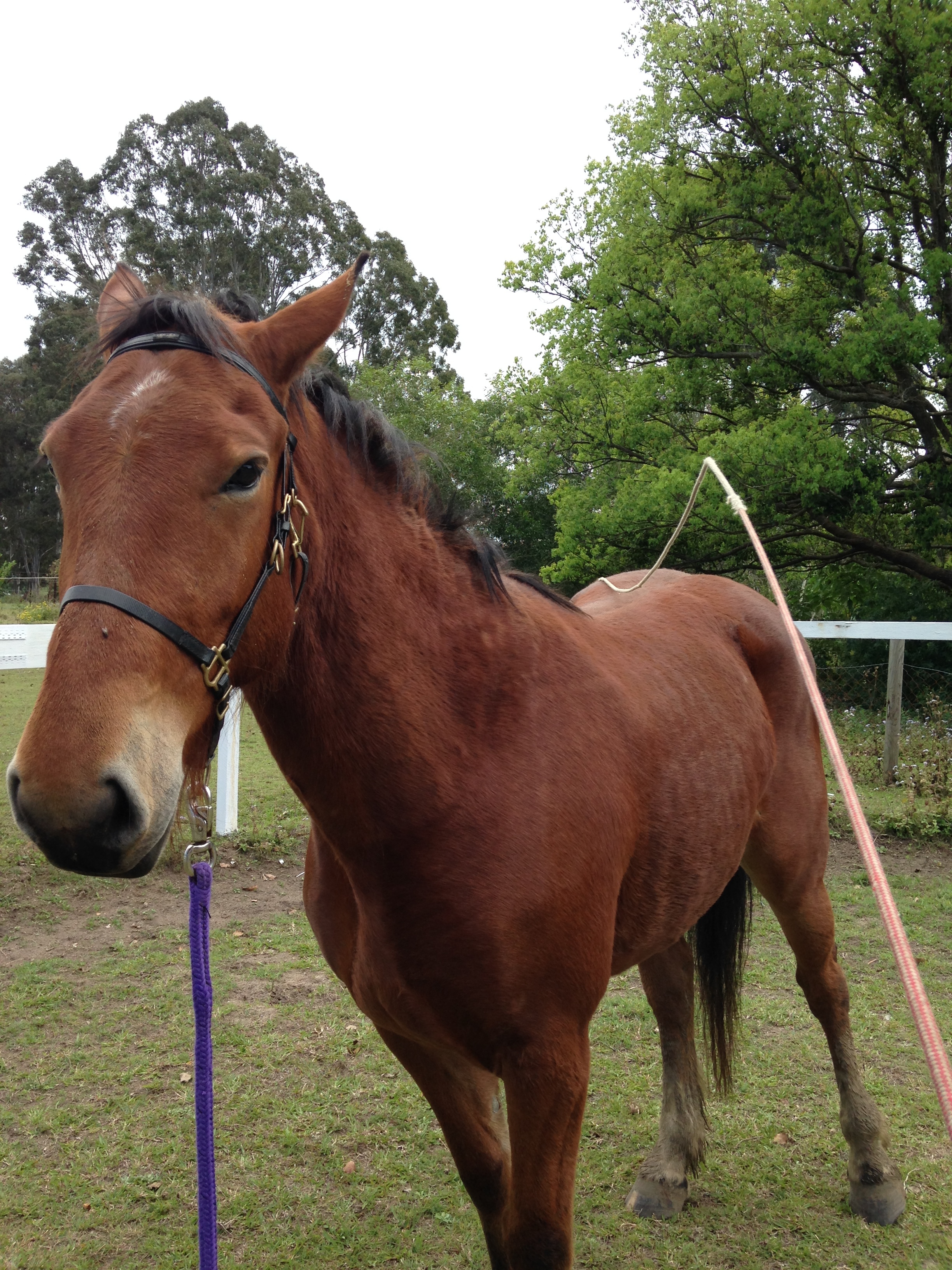
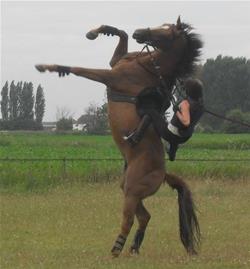









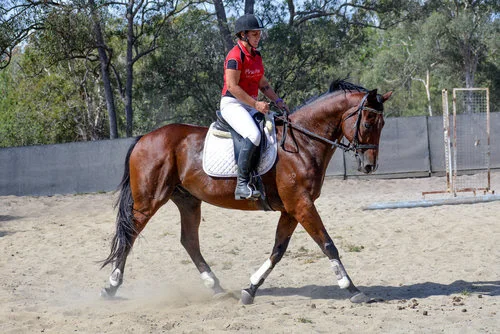



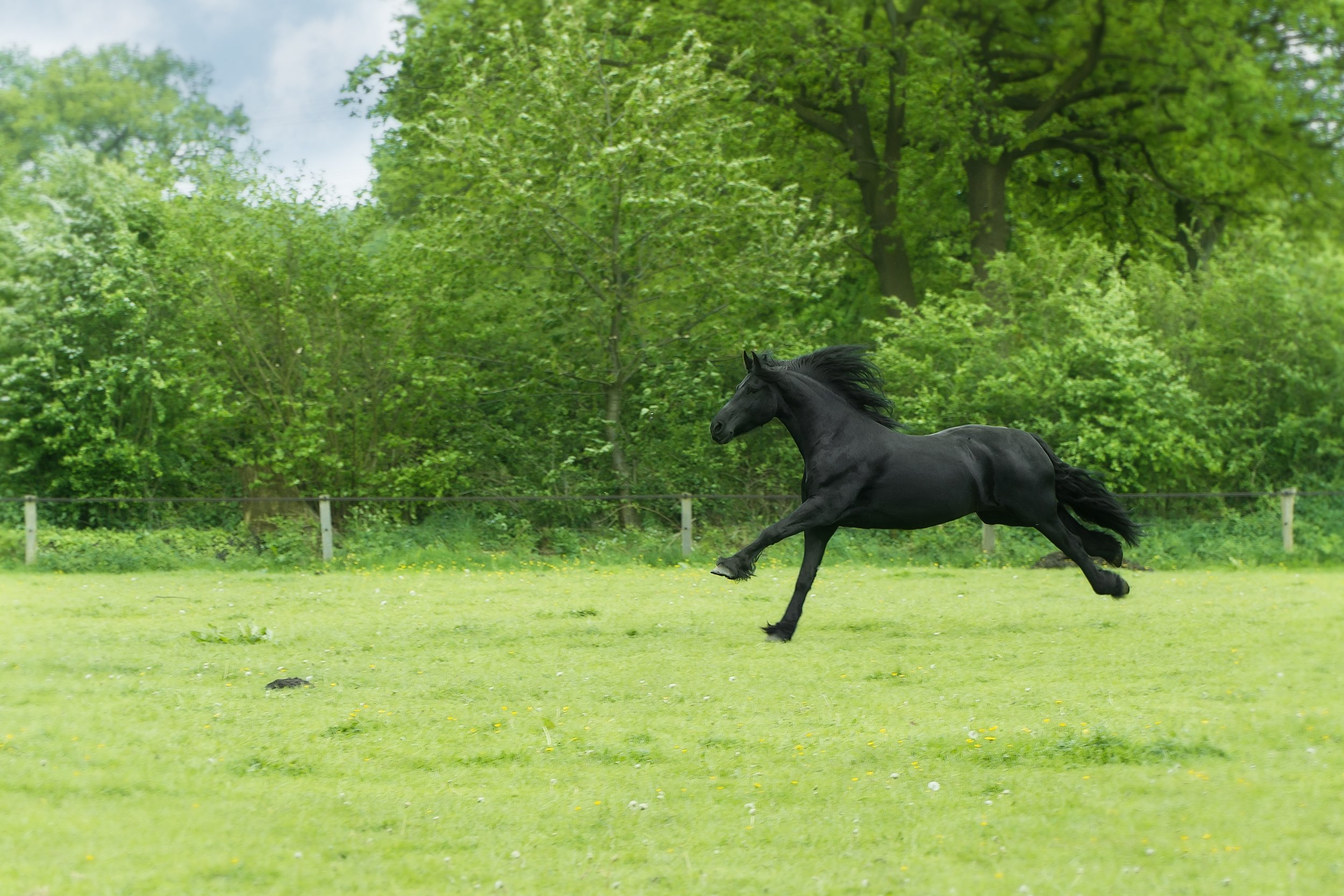




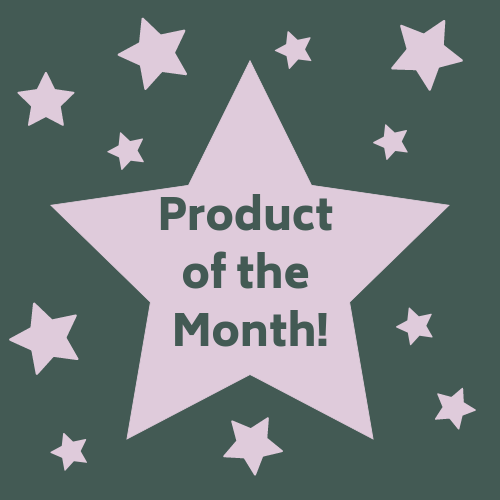



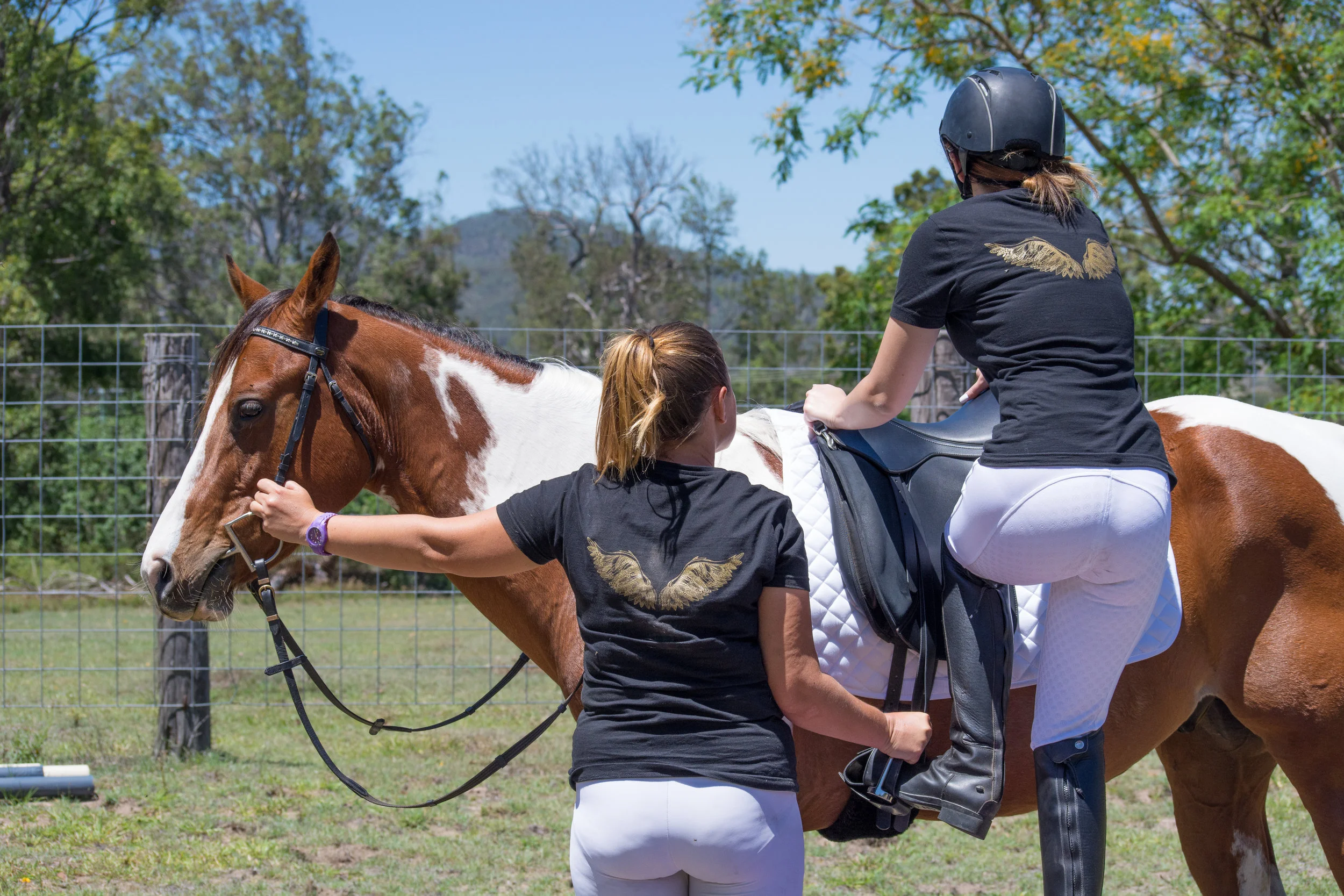
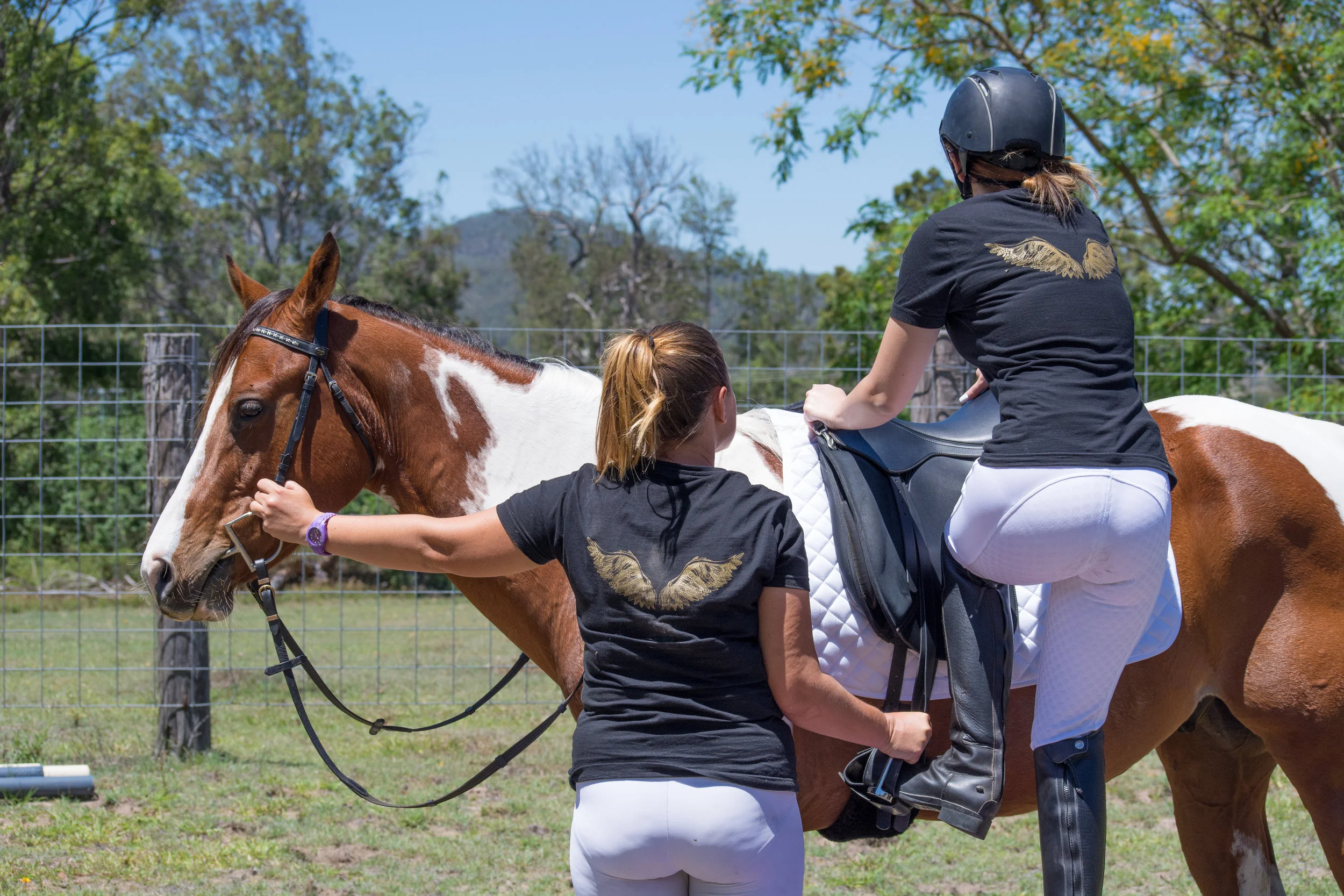
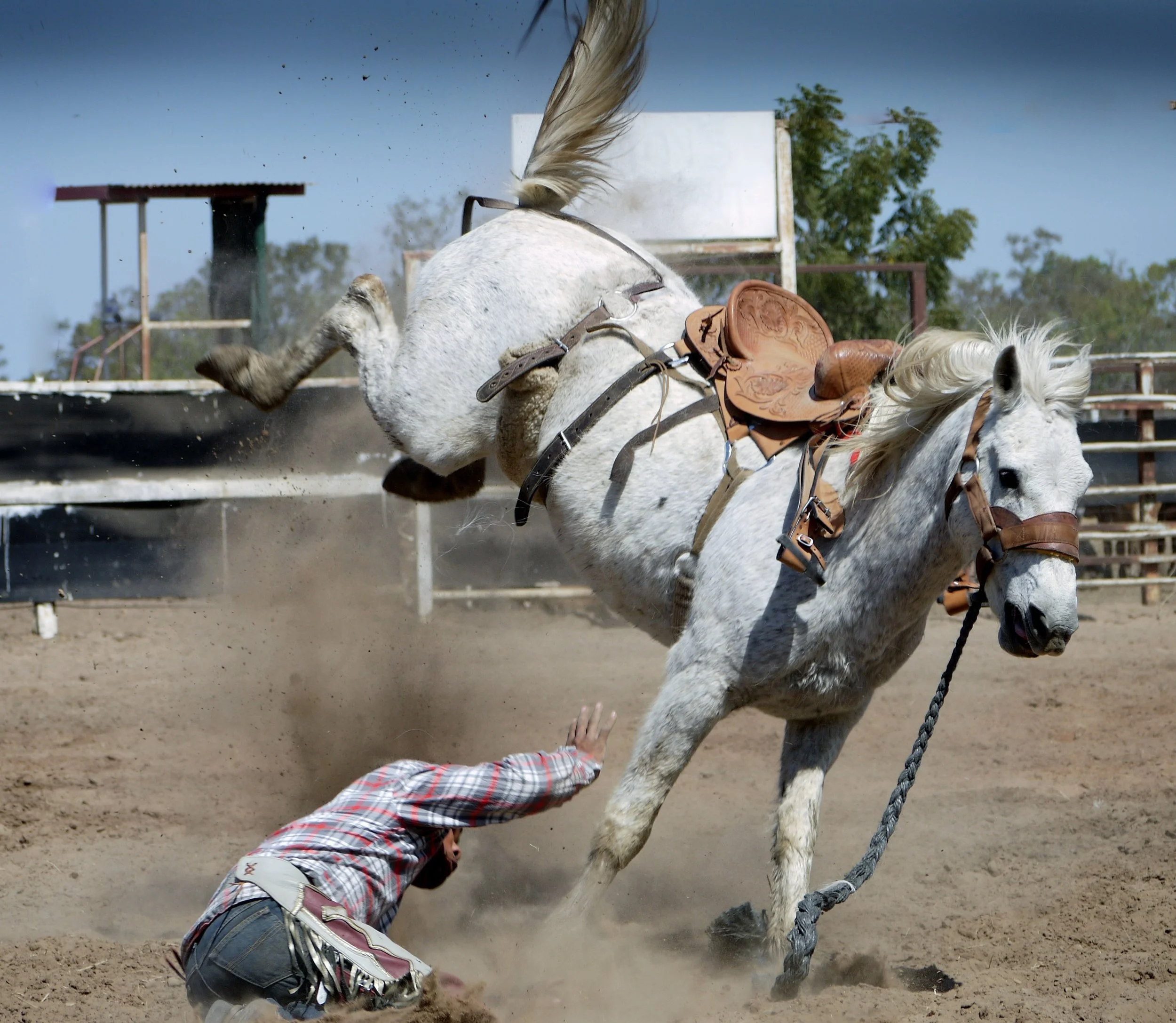
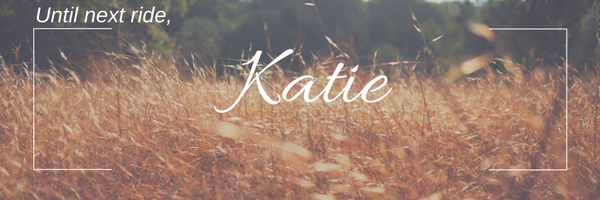






















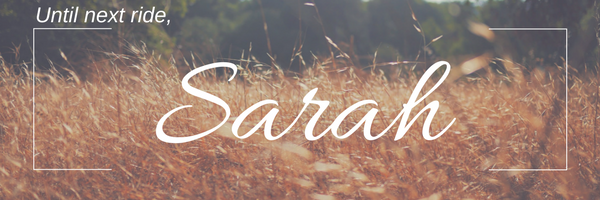








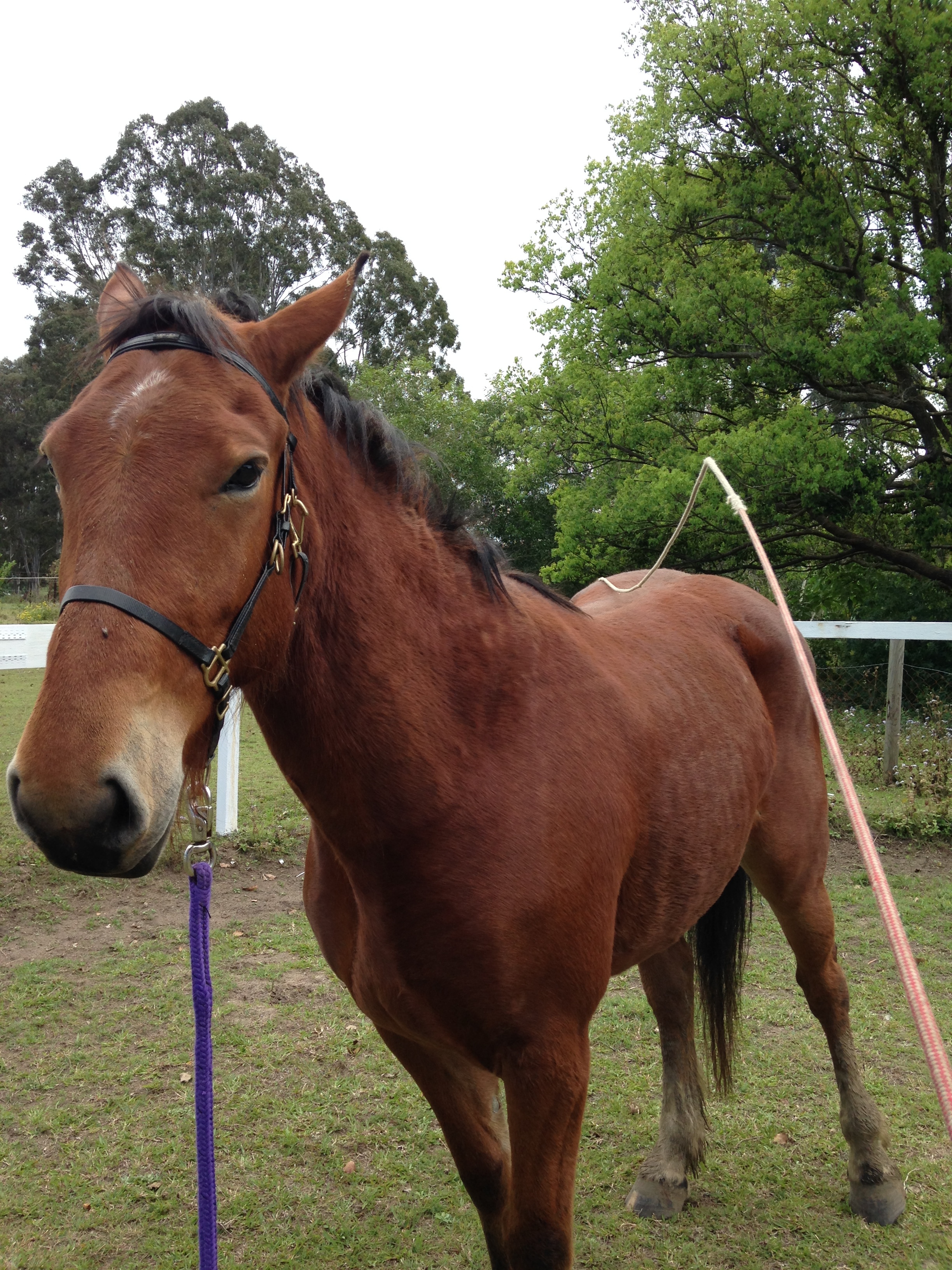
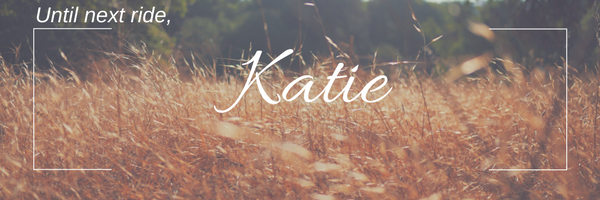








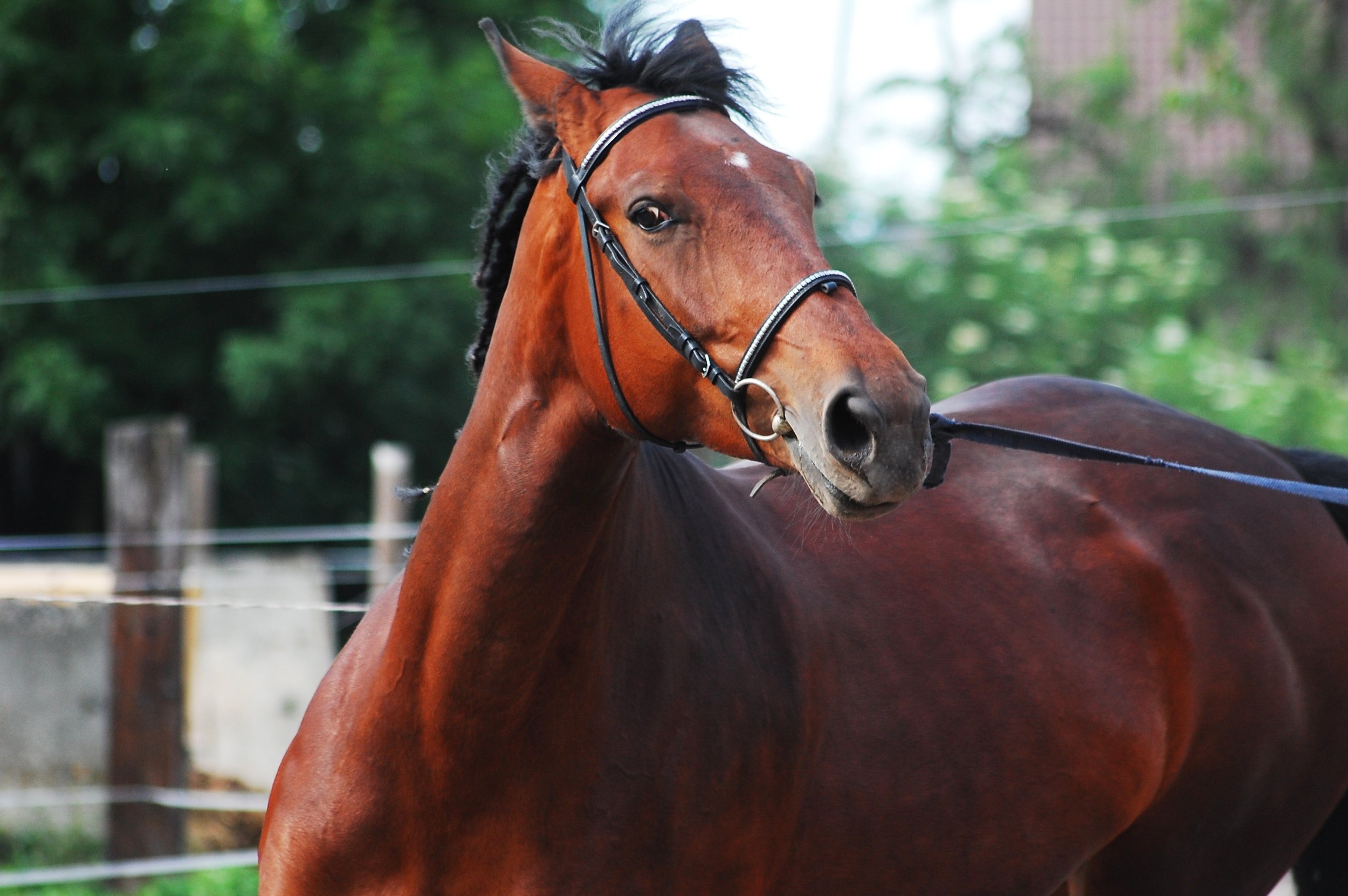



Free online workshop